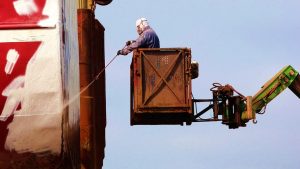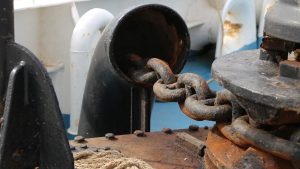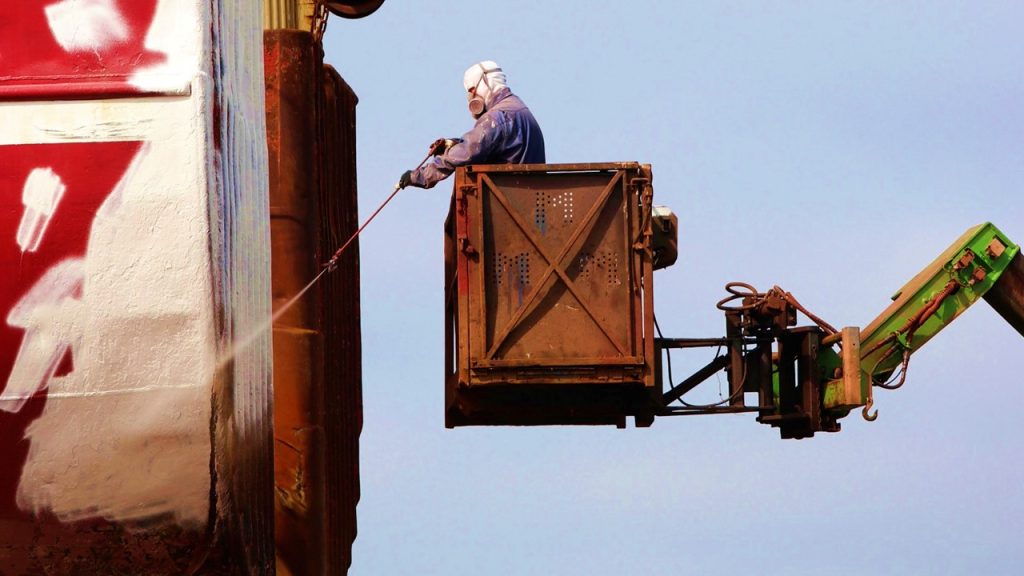In the sprawling shipyards of the Philippines, where massive vessels are crafted with steel and sweat, safety is not just a matter of responsibility—it is a lifeline for thousands of dedicated workers. As these skilled laborers navigate through the intricate processes that shape maritime giants, various risks loom at every turn. To ensure their well-being and foster a culture of prevention, this comprehensive guide has been curated—a roadmap to shipyard safety in the Philippines.
Click here to view our shipyard facility in Tanza, Cavite, Philippines.
Click here to read our HSE policy.
The Importance of Shipyard Safety in the Philippines
Working in a shipyard in the Philippines can be a risky job, and shipyard safety in the Philippines should always be the top priority. Shipyard accidents can lead to serious injuries or even fatalities, as well as significant damage to equipment and the environment. That is why it is crucial for shipyards to have comprehensive safety measures in place.
One of the key reasons why shipyard safety is so important is the potential for hazardous materials and substances on board ships. These include flammable liquids, toxic gases, and corrosive chemicals. Without proper safety protocols, accidents involving these materials could have disastrous consequences not just for workers but also for nearby communities and marine ecosystems.
Furthermore, prioritizing shipyard safety helps minimize production delays caused by accidents or incidents. Time lost due to injuries or equipment damage can result in project setbacks and financial losses. By investing in robust safety measures from the start, shipyards can reduce the likelihood of such disruptions occurring.
There are numerous reasons why shipyard safety should never be compromised. The potential dangers posed by hazardous materials, both to workers and the environment, emphasize the need for stringent safety protocols. Additionally, prioritizing safety reduces the risk of costly production delays that can impact not only individual projects but also overall business success. Ultimately, ensuring shipyard safety is a responsible choice that protects lives, property, and reputations within this vital industry sector.

Shipyard Safety 1: Understanding Hazards in Shipyard Operations
Working in a shipyard can be both exciting and hazardous. From welding to painting, there are numerous tasks that require workers to remain vigilant about potential dangers. Understanding these hazards is the first step in ensuring shipyard safety on site.
One common hazard in shipyard work is confined spaces. These tight areas can pose risks such as lack of oxygen, toxic gases, or the potential for explosions. Workers must receive proper training on how to enter and work in confined spaces safely to mitigate these risks.
Another significant hazard is working at heights. Shipyards often have tall structures where employees need to climb ladders, scaffolds, or platforms. Falls from heights are a leading cause of injuries in this industry, so it’s crucial for workers to wear appropriate harnesses and receive adequate training on fall protection systems.
By understanding the specific hazards associated with shipyard work, employers can develop comprehensive safety protocols and provide their employees with the necessary training and equipment to prevent accidents and ensure a safe working environment.

Shipyard Safety 2: Personal Protective Equipment (PPE) Guidelines
In the fast-paced and potentially hazardous environment of shipyards in Cavite, Manila, Cebu, Subic Bay, Bataan, General Santos, and Batangas, ensuring the safety of workers should always be a top priority. As we discussed in our previous blog section on shipyard safety, one crucial aspect of safeguarding workers is the proper use of Personal Protective Equipment (PPE). These guidelines are designed to provide an added layer of protection against potential injuries and accidents that may arise in shipyard operations.
When it comes to PPE, one size does not fit all. Different tasks and job roles in the shipyard require specific types of protective equipment. For instance, workers involved in welding or cutting operations must wear appropriate eye protection such as welding goggles or face shields to shield their eyes from dangerous sparks or flying debris. Similarly, employees dealing with chemicals or painting should don respiratory masks to guard against inhaling harmful fumes or particles. By tailoring PPE requirements according to job functions, shipyards can ensure that their workforce is adequately protected while performing their tasks.
Aside from wearing the correct type of PPE gear for a specific task, proper fitting is also essential for ensuring optimal protection. Ill-fitting equipment can compromise its effectiveness and put workers at risk. Conducting regular employee training sessions on proper fitting techniques can help raise awareness about this crucial aspect. Employers should emphasize that employees must have a snug but comfortable fit with adjustable straps properly secured to avoid equipment slipping off during work activities.

Shipyard Safety 3: Safe Material Handling Practices
Safe material handling practices are crucial in shipyards to prevent accidents and injuries. One important aspect is proper lifting techniques, which include using mechanical aids such as cranes or forklifts whenever possible. This equipment not only reduces the risk of strain on workers but also allows for more precise positioning of materials. Additionally, it is essential to train workers on the proper use of these devices to ensure their safety and effectiveness.
Another key practice is organizing materials in a systematic and well-structured manner. This helps minimize clutter and promotes efficient workflow within the shipyard. By having designated storage areas and clear labeling systems, workers can easily identify and locate specific materials, reducing the time spent searching and decreasing the likelihood of tripping hazards.
Furthermore, regular inspection of equipment used for material handling should be carried out to ensure their reliability. Frequent maintenance checks can help identify any potential issues before they escalate into serious problems that may compromise shipyard safety in Cavite, Manila, Cebu, Subic Bay, Navotas, and Batangas. Implementing a proactive approach towards equipment maintenance reduces downtime due to breakdowns while ensuring worker safety remains a top priority.
By prioritizing safe material handling practices in shipyards, potential risks can be significantly mitigated, protecting both employees and assets involved in construction projects. A concerted effort toward continuous training, effective organization, and diligent equipment maintenance will contribute to maintaining a safe working environment within Philippine shipyards.

Shipyard Safety 4: Fire Prevention and Emergency Response Procedures
Fire prevention and emergency response procedures are crucial in shipyards in Manila or Cavite to ensure the safety of workers and the protection of valuable assets. In the event of a fire, time is of the essence, and having well-defined emergency response procedures can mean the difference between a small incident and a catastrophic event. Shipyard managers should prioritize regular training sessions for all employees on fire prevention measures, including proper handling of flammable materials and usage of firefighting equipment. Moreover, implementing a clear evacuation plan with designated assembly points will help evacuate workers safely in case of an emergency.
In addition to preventative measures, having effective emergency response procedures in place is essential. This includes providing workers with proper training on how to respond during a fire emergency, such as when to activate fire alarms or call for help from external responders like local firefighters or the Philippine Coast Guard. Regular drills should be conducted to familiarize employees with their assigned roles during an emergency situation. Additionally, it is important for shipyards to have up-to-date fire detection systems that can quickly identify any potential fire hazards before they become major incidents.
While preventing fires is crucial onboard ships under construction or repair at shipyards, it’s equally important to recognize that accidents do happen. Therefore, every shipyard must have appropriate firefighting equipment ready for immediate use at all times. This includes portable extinguishers strategically placed throughout the yard as well as hoses attached to reliable water sources situated at various locations around the premises.

Shipyard Safety 5: Best Practices for Working at Heights
Working at heights is a common occurrence in shipyards, and it comes with its fair share of risks. However, by following best practices, workers can mitigate potential accidents and ensure their safety. One key practice is the use of fall protection equipment such as harnesses, lanyards, and anchor points. These tools are essential in preventing falls and should be worn correctly at all times.
Another important aspect of working at heights is proper training. Shipyard workers must receive comprehensive instruction on the safe use of equipment and techniques for working at elevated levels. Ongoing training programs help reinforce the importance of shipyard safety protocols and keep employees updated on any new developments or industry-specific requirements. By investing in regular training sessions, shipyards can create a culture of safety that becomes second nature to everyone involved.
In addition to fall protection equipment and training, regular inspections play a crucial role in maintaining safety standards when working at heights. Regularly checking scaffolding structures for stability and ensuring that guardrails are intact are just a few examples of inspections that should be conducted before every work shift. These inspections not only prevent accidents but also promote awareness among workers about potential hazards they may encounter while performing tasks at elevated locations within the shipyard.
By implementing these best practices for working at heights, shipyards can significantly reduce the risk of accidents and injuries on their premises. Prioritizing fall protection equipment, comprehensive training programs, and regular inspections ensure that workers have the necessary tools to stay safe while working above ground level.

Shipyard Safety 6: Safe Handling of Heavy Machinery
Safe handling of heavy machinery is crucial in shipyard operations to prevent accidents and maintain a safe working environment. It starts with proper training and certification for employees operating the machinery. Supervisors should ensure that operators are knowledgeable about the specific equipment they are using, as well as proper safety procedures.
Regular inspections of the machinery should be conducted to identify any potential issues or hazards. This includes checking for loose bolts or parts, ensuring all safety guards are in place, and inspecting hydraulic hoses for leaks. Additionally, all heavy machinery should be equipped with clear warning signs and labels indicating any potential dangers or necessary precautions.
When it comes to moving heavy objects, proper lifting techniques must be followed. Workers need to use appropriate lifting equipment such as cranes, forklifts, or hoists to lift heavy loads safely. The load capacity of these machines should never be exceeded, as this can lead to instability and accidents.
Moreover, communication among workers is vital when handling heavy machinery. Clear signals and hand gestures should be established beforehand to ensure efficient coordination during operations. In addition, a designated shipyard safety officer should always be present on-site to monitor the operation and enforce safety protocols.

Shipyard Safety 7: Health and Hygiene Practices
Health and hygiene practices are crucial in shipyard safety. Workers often face various risks, ranging from exposure to hazardous chemicals to physical injuries. Following proper health and hygiene protocols can significantly reduce the chances of accidents and illness.
One important practice is the use of personal protective equipment (PPE). It is essential for workers to wear appropriate gear such as gloves, masks, helmets, and safety glasses depending on the tasks they perform. Regular handwashing with soap and clean water is also crucial in preventing the spread of bacteria and viruses.
Furthermore, maintaining good personal hygiene outside of work is equally important. Workers should be encouraged to have regular medical check-ups to ensure their overall well-being. Proper nutrition, hydration, and exercise also play a significant role in maintaining good health. By prioritizing health and hygiene practices both at work and in their personal lives, shipyard workers can decrease the likelihood of accidents or illnesses while on the job.

Shipyard Safety 8: Training and Education to Equip Workers with the Knowledge and Skills
Training and education are crucial elements in equipping shipyard workers with the necessary knowledge and skills to ensure their safety on the job. In a constantly evolving industry like shipbuilding, it is imperative that workers stay updated with the latest shipyard safety protocols and technologies. Through regular training programs, workers can learn about potential hazards, proper use of personal protective equipment (PPE), emergency response procedures, and safe work practices.
One aspect that cannot be overlooked is the importance of hands-on training. Workers need practical experience in handling different tools, machinery, and equipment found in shipyards. Simulated scenarios can help them understand how to react efficiently in emergency situations or when confronting potential hazards. By providing comprehensive training sessions that encompass both theoretical knowledge and practical skills, shipyard workers can develop a proactive mindset towards safety.
Moreover, continuous education plays an equally essential role in maintaining a safe working environment. This could involve seminars or workshops that focus on topics such as new regulations or innovative technologies relevant to the industry. By keeping workers informed about changes within their field, companies not only enhance dockyard safety measures but also promote a culture of learning and growth among employees.
By prioritizing training and education initiatives for shipyard workers, companies are investing in their most valuable asset: their workforce. Equipping employees with the knowledge and skills necessary for ensuring shipyard safety creates a more confident team while reducing accidents and promoting productivity. Ultimately, this commitment to ongoing development fosters an environment where everyone’s well-being is paramount – an environment where success thrives alongside security.

Shipyard Safety 9: Emergency Preparedness and Responding to Accidents
Emergency preparedness and knowing how to respond to accidents are crucial aspects of shipyard safety. When working in a shipyard, it is essential for all employees to be well-trained in emergency procedures such as fire drills, first aid techniques, and evacuation protocols. This not only ensures the safety of the workers in Cavite or Subic Bay but also prevents potential damage to the shipyard’s infrastructure and nearby vessels.
One aspect that often goes unnoticed is the importance of regular drills and training exercises. These simulations help familiarize employees with various emergency scenarios so that they can respond quickly and effectively if an actual accident occurs. By practicing these drills regularly, workers develop muscle memory which allows them to react instinctively during high-stress situations, increasing their chances of success when dealing with emergencies.
Furthermore, it is crucial for shipyards to have a robust incident reporting system in place. By promptly reporting any accidents or near misses, potential hazards can be identified and addressed before they escalate into full-blown disasters. This proactive approach not only helps prevent future incidents but also promotes a culture of safety within the shipyard. Open communication channels between workers and management play a vital role in creating an environment where everyone feels comfortable reporting incidents without fear of retribution.
In conclusion, emergency preparedness should be given utmost priority in shipyards. Regular drills and training exercises help ensure that workers are equipped with the necessary skills to handle emergencies efficiently. Establishing an effective incident reporting system encourages open communication and allows for timely hazard identification and mitigation efforts.

Amaya Dockyard & Marine Services Inc. (ADMSI) Follows Strict Safety Standards
Amaya Dockyard & Marine Services Inc. (ADMSI) is a shipyard in Cavite, Philippines that stands out for its strict adherence to shipyard safety standards. With an unwavering commitment to ensuring the well-being of both their employees and clients, ADMSI has implemented rigorous safety protocols that exceed industry standards.
- Email us: info@amayadockyard.com
- Call our 24-hour hotline: +63 917 633 0479
- Viber: +63 917 633 0479
- WhatsApp: +63 917 633 0479
- Facebook Messenger: Click here
- Click here to inquire
One of the key factors behind ADMSI’s exceptional shipyard safety record is its proactive approach to risk management. Before any project begins, thorough risk assessments are conducted to identify potential hazards and develop appropriate preventive measures. This proactive mindset ensures that all safety concerns are addressed before they become problems, minimizing the risk of accidents or injuries at every stage of the shipbuilding process.
Furthermore, ADMSI places great emphasis on regular training and continuous improvement initiatives related to safety procedures. The company provides comprehensive training programs for its workers, covering topics such as personal protective equipment usage, emergency response protocols, and safe handling of hazardous materials. By investing in ongoing training initiatives, ADMSI ensures that all employees have up-to-date knowledge and skills necessary to maintain a safe working environment.
Amaya Dockyard & Marine Services Inc. sets an exemplary standard when it comes to following strict safety standards in Philippine shipyards. Their proactive approach to risk management combined with comprehensive employee training programs demonstrates their commitment to ensuring a safe working environment for all stakeholders involved in every project they undertake.
Take Away: Shipyard Safety in the Philippines is Paramount
In conclusion, it is evident that shipyard safety in the Philippines is of utmost importance to prevent accidents and ensure the well-being of workers. The maritime industry plays a significant role in the country’s economy, but it comes with its fair share of risks and hazards. By implementing strict safety protocols and enforcing proper training programs, shipyards can create a safer working environment.
One key aspect to consider is enhanced communication among all stakeholders involved, including workers, supervisors, and management. This can help identify potential hazards early on and address them promptly. Additionally, regular equipment maintenance and inspections are crucial in preventing accidents caused by faulty machinery or infrastructure.
Furthermore, continuous improvement initiatives should be encouraged within shipyards to foster a culture of safety awareness. Regular review processes conducted by an independent team can assess current safety practices and recommend necessary changes or upgrades. Ultimately, prioritizing shipyard safety will not only protect workers’ lives but also contribute to boosting the overall productivity and reputation of the Philippine maritime industry.



